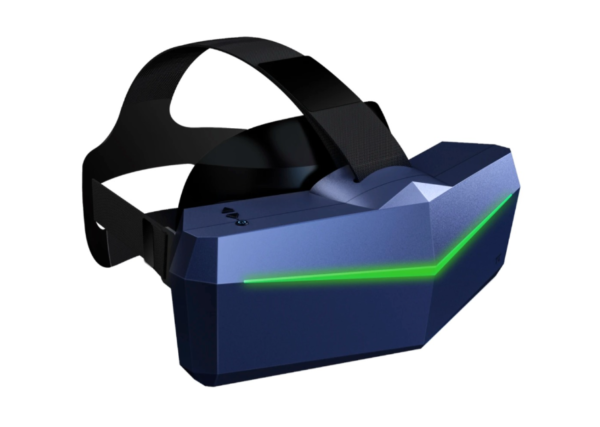Why is Progress on the VR Field of View So Slow?
Although virtual reality technology has registered significant gains over the past decade, the presence or quality of immersion is still adversely affected by one persistent limitation – the relatively narrow field of view (FOV) which hasn’t changed much for a decade.
Technically, today’s virtual reality headsets are far better than the bulkier and boxier contraptions of the early days of virtual reality. Today’s headsets not only have slimmer form factors, but they also pack higher resolution displays, better processing power, longer battery life, handheld controllers, better tracking systems, and sophisticated motion controllers, among other hardware specifications. All of these have improved the user experience and quality of immersion.
The field of view has improved, though it hasn’t been a quantum leap like other specifications. The FOV has remained in the range of 90 to 110 degrees, which is far short of the human visual range of approximately 210 degrees horizontal field of view and 150 degrees vertical field of view. Why is this the case, especially for Meta’s Quest headsets?
The Quest 3 headset currently has the widest horizontal field of view in the Quest line, at 110 degrees. Previous-generation headsets aren’t too far from this FOV.
In fact, Meta has been lagging behind in its FOV specifications. The Pimax 8KX, for instance, has a horizontal field of view of 170 degrees. Vrgineers’ XTAL 3’s horizontal FOV is 180 degrees. Both of these are very close to the human visual range or the natural field of view.

The headset’s field of view is an important factor in the depth of immersion. Integrating the field of view has good upside potential. Why, then, is Meta not offering a better field of view despite being the leading proponent of XR technologies?
In 2022, Meta CTO Andrew Bosworth explained that increasing the field of view of the company’s headsets was costly and was not the right trade-off for the company. According to Bosworth, increasing the FOV is expensive as it entails increasing the number of pixels, which, by definition, won’t necessarily be useful. Bosworth added that the pixels will be in the periphery and also consume lots of power.
The two virtual reality headsets with the biggest horizontal FOVs, the Pimax 8KX and the XTAL 3 are wired, as opposed to the wireless Quest headsets, and thus get most of their power from a PC along with a wall outlet. Quest headsets, on the other hand, still have to rely on an integrated chip and a battery.
The Quest headsets are also significantly cheaper compared to the more expensive Pimax and Vrgineers headsets that feature an optical design. Also, the larger field of view means these two headsets spot a bulkier design than the slimmer and sleeker Quest headsets. One of the biggest selling points for the Quest headsets has been its sleek design and slim form factor. Mainstream consumers aren’t going to purchase bulkier and heavier headsets that still spot a legacy headset look.
Still, Meta hasn’t given up on pursuing a wider field of view on its headsets. Over the weekend, Bosworth shared images from the company’s research labs that show him testing new headset prototypes.
One of the devices shown in the images appears to have a very wide field of view. However, these prototypes are unlikely to be productized any time soon. It’s now customary for Meta, involved in frenzied XR research, to build lots of headset prototypes that are rarely commercialized.
Early this year, Bosworth shared his vision of what the Meta Quest could look like in seven years. He indicated that while we shouldn’t expect a dramatic increase in the field of view, any expansion is likely to occur vertically rather than horizontally.
He added that users would ideally want a wide enough field of view so they do not always notice its edges. He postulated that a taller field of view is actually more crucial for immersion than a wider one. While a wider field of view is more important for processing information since our eyes naturally see more horizontally, increasing the vertical field of view enhances the feeling of immersion in a way that can be surprisingly effective, he said.
https://virtualrealitytimes.com/2024/10/24/why-is-progress-on-the-vr-field-of-view-so-slow/https://virtualrealitytimes.com/wp-content/uploads/2024/10/Pimax-Vision-8K-X-600x427.pnghttps://virtualrealitytimes.com/wp-content/uploads/2024/10/Pimax-Vision-8K-X-150x90.pngComputingTechnologyAlthough virtual reality technology has registered significant gains over the past decade, the presence or quality of immersion is still adversely affected by one persistent limitation – the relatively narrow field of view (FOV) which hasn’t changed much for a decade. Technically, today’s virtual reality headsets are far better than...Kristin HummelKristin Hummel[email protected]AuthorVirtual Reality Times - Metaverse & VR
